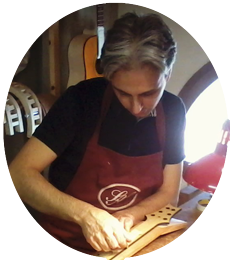
Visit the new website: www.buildyourownguitaronline.com
HOME > Different kind of guitar headstock
DIFFERENT KIND OF GUITAR HEADSTOCK
The headstock serves as a support for the tuners but also plays an important role in the overall sound of the instrument. The stiffer the headstock and neck/headstock joint, the more the instrument will tend to keep the vibration to the strings intact for the benefit of sustain.
A weaker, not reinforced neck/headstock joint or a thin headstock, will tend to bend while the instrument is playing, absorbing the vibration of the strings and reducing the sustain of the notes.
Hence the way the headstock is crafted, whether straight or tilted back, has an impact on the sound, the sustain, the playability, and production costs of the instrument.
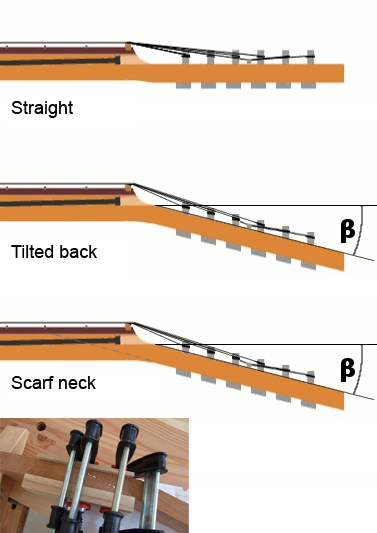
STRAIGHT HEADSTOCK
The Fender type headstock (Strat/Tele/JB etc.) are defined as "straight" and allow the construction of a whole neck, headstock included, from a single piece of wood with a thickness of about 20mm.
This solution is suitable for mass production, allowing considerable savings on both labour and waste. It is also very effective in the presence of vibrato bridges because the string extends without angling on the nut except for the downside minimum that allows it to vibrate.
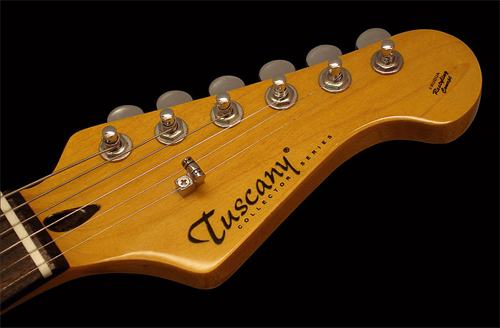
TILTED-BACK HEADSTOCK
The setting in Gibson instruments is different, where the headstock is tilted and requires the use of larger pieces of wood for the construction of the neck, with consequent increase in costs.
An angled headstock also offers a much weaker resistance to shocks due to the reduced length of the grain in the joint area.
The angle of the headstock does NOT have any influence on strings tension.
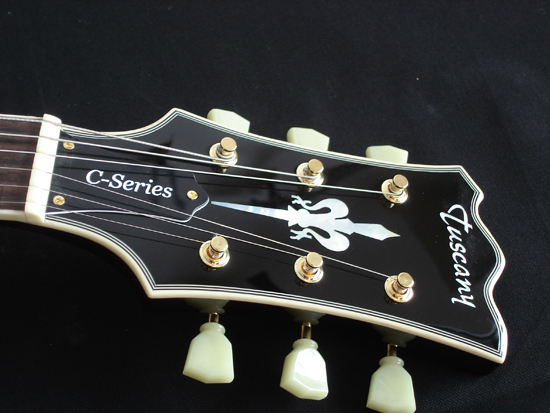
SCARF NECK
To avoid the considerable fragility of the tilted back design, some manufacturers have adopted from the world of classical guitar the "scarf neck" system, which consists of gluing together two pieces of wood as shown in Figure A.
This system allows a remarkable robustness and at the same time maintains the timbre advantages of the tilted back solution.
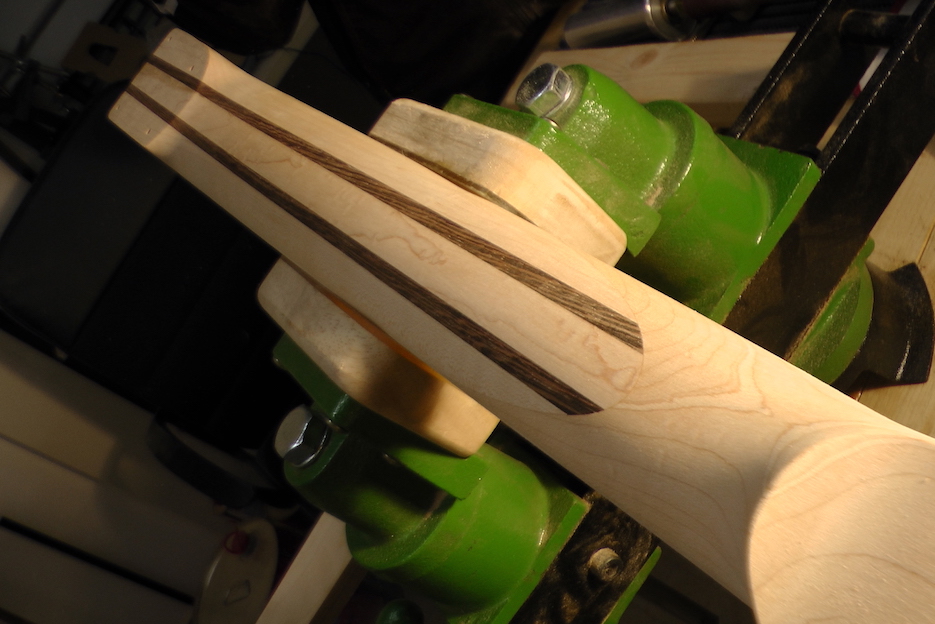
headstock reinforced with a volute).
A volute also helps reinforcing the headstock to neck joint thus improving the sound,
increasing the sustain and robustness of the neck.
HEADSTOCKS AND TREMOLOS
Although both straight and tilted back headstocks are used with any type of fixed bridge and tremolo, due to the rectilinear alignement with which the strings pass through the nut, the "straight" headstock is more suitable for the use of tremolo.
Some manufacturers, such as PRS, have nevertheless managed to achieve excellent results in terms of tuning hold, even with a tilted back headstock, reducing the angle of inclination to 10 degrees and rethinking the design so that the strings reach the tuners as straight as possible.
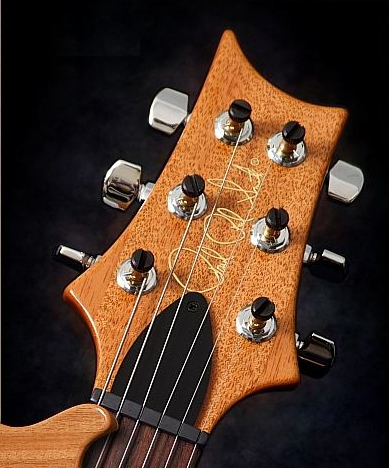
This reduces the friction and favours the strings sliding for as shown in
this series of videos where Galeazzo Frudua explains all kind of
modifications you can apply to you tremolo equipped guitar to achieve a perfect tuning stability under tremolo work.
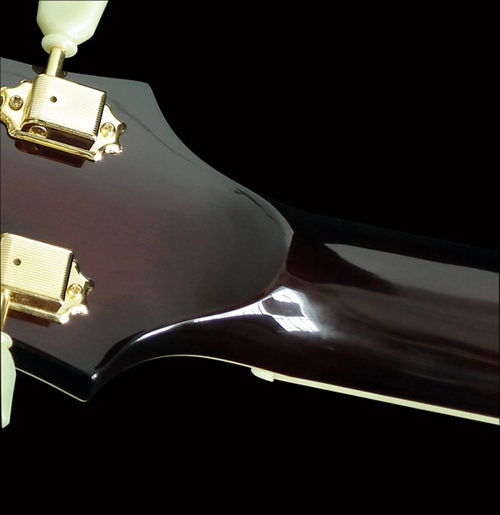
increase the sustain and robustness of the neck.
HELPFUL TIPS
Adding any kind of "mass" to your headstock will move the resonant peak away from the one of the strings and therefore may contribute to improve your tone and eliminating "dead" notes.

stiffness and mass thus improving tone and strings vibration.

